Rob Robbins - Tactical Trend Trading: Strategies for Surviving and Thriving in Turbulent Markets
Here you can read online Rob Robbins - Tactical Trend Trading: Strategies for Surviving and Thriving in Turbulent Markets full text of the book (entire story) in english for free. Download pdf and epub, get meaning, cover and reviews about this ebook. year: 2012, publisher: Apress, genre: Business. Description of the work, (preface) as well as reviews are available. Best literature library LitArk.com created for fans of good reading and offers a wide selection of genres:
Romance novel
Science fiction
Adventure
Detective
Science
History
Home and family
Prose
Art
Politics
Computer
Non-fiction
Religion
Business
Children
Humor
Choose a favorite category and find really read worthwhile books. Enjoy immersion in the world of imagination, feel the emotions of the characters or learn something new for yourself, make an fascinating discovery.
- Book:Tactical Trend Trading: Strategies for Surviving and Thriving in Turbulent Markets
- Author:
- Publisher:Apress
- Genre:
- Year:2012
- Rating:3 / 5
- Favourites:Add to favourites
- Your mark:
Tactical Trend Trading: Strategies for Surviving and Thriving in Turbulent Markets: summary, description and annotation
We offer to read an annotation, description, summary or preface (depends on what the author of the book "Tactical Trend Trading: Strategies for Surviving and Thriving in Turbulent Markets" wrote himself). If you haven't found the necessary information about the book — write in the comments, we will try to find it.
Follow trends and make money, or dont follow trends and dont make money. Robert Robbins wants investors to follow trends. His effort is to be saluted. Michael W. Covel, bestselling author of Trend Following, The Complete Turtle Trader, and Trend Commandments
A must-read for both the experienced and newcomers. The student has bypassed his mentor. Ralph Bloch, consultant at Bulls, Bears, & Bloch
Rob presents both the new and experienced trader with insights needed for successful trading. As a long-time trend follower, I share many of Robs thoughts in Tactical Trend Trading. If you are truly interested in learning an investment strategy without the hype from a real trader, then this is the one definitive source. Andrew Abraham, author of Learn How to Trend Follow
Conventional wisdom has long insisted that the bestif not the onlystock market strategy worth employing is the traditional buy-and-hold model. But buy-and-hold investing is no match for todays turbulent markets, where real change happens every day and companies and entire industries are stamped out in the blink of an eye. Fortunately, there is a better way, one that enables market participants to preserve their capital while increasing their net gains in even the most volatile of markets. That way is trend trading, and with Tactical Trend Trading as your guide, you will be better prepared than ever before to tackleand profit fromevery curveball that todays topsy-turvy markets throw your way.
Written by hedge fund manager and trend trader Robert Robbins, Tactical Trend Trading starts out from the basic premise that if market participants learn to embrace change, they will be better able to harness its ability to unlock profits in every corner of the markets. To that end, Robbins equips you not only with the technical trading tools you need to analyze the market backdrop and identify and trade with market-prevailing trends, but also psychological guidelines that will enable you to blast through the emotional obstacles that stand in the way of profit generation and risk control. Rich in detail yet easy to digest and implement, Tactical Trend Trading covers:
- The basics of trend trading, including what it is, its primary benefits and drawbacks, what type of commitment it entails, and how you can use it every day to profit from market volatility;
- How to leverage technical analysis and sentiment indicators to pinpoint profit-generating stocks, sectors, and trends, predict market corrections, and execute perfectly timed trades;
- Mental strategies for surmounting the ingrained psychological and emotional habits that prevent traders from realizing true financial success;
- Techniques for developing a systematic approach to the markets that will enable you to survive and thrive in up, down, and sideways markets;
- And much more.
Along the path to becoming a successful trend trader, your technical acumen and mental fortitude will be tested every step of the way. Prepare yourself for the brave new world of todays ever-changing financial markets with Tactical Trend Trading, which provides you with all the moneymaking insights you need to capture trends, trade with the flow, and pull in profits, regardless of whether market conditions are good or bad.
What youll learn- Why todays turbulent markets have rendered buy-and-hold investing obsolete and how trend trading can help you thrive in even the most volatile of market conditions
- Techniques for identifying and trading in concert with the primary trend of a market
- How to select the most profitable bullish and bearish stocks and set your entry and exit prices
- Specific tactics for profiting from a wide variety of chart patterns, from rectangles and rounding bottoms to flags, wedges, head-and-shoulders formations, and more
- Why risk control and discipline are the two most important tools in any trend traders arsenal
- Psychological guidelines that separating winning traders from the rest of the pack and tips for staying in the trend trading game
Tactical Trend Trading is a guide to the fast-paced world of trend trading for those with some experience actively trading or investing in the financial markets but who lack the specific technical knowledge or psychological framework that is crucial to trend trading success. Specifically, this book will appeal to investors who are tired of seeing their portfolios decimated by every major move the market makes and want to understandand profit fromthe rapid rate of change and turmoil underlying their assets.
Table of Contents- Tactical Trend Trading
- The Market Backdrop
- Setups and Chart Patterns
- Technical Tactics
- Market Considerations
- Systematic Trend Following
- Discipline and Risk Control
- Pitfalls
- Philosophy
- Summing It All Up
- Appendix
Rob Robbins: author's other books
Who wrote Tactical Trend Trading: Strategies for Surviving and Thriving in Turbulent Markets? Find out the surname, the name of the author of the book and a list of all author's works by series.

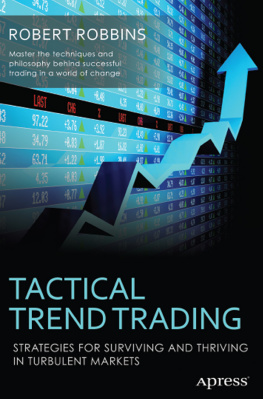

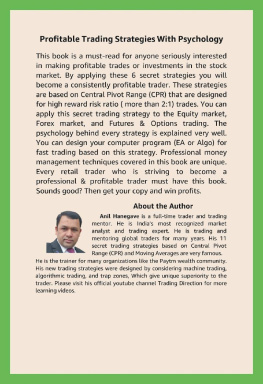
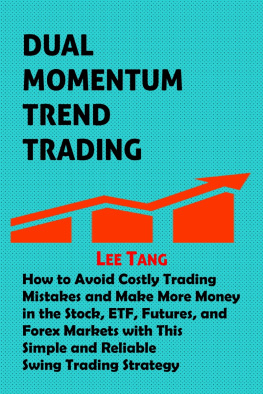
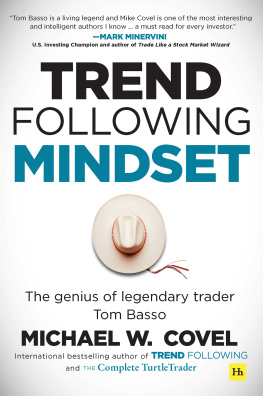
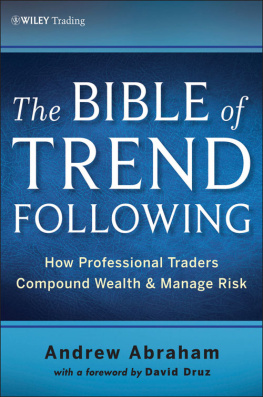
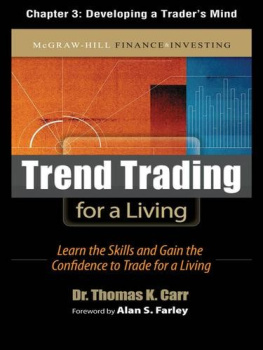
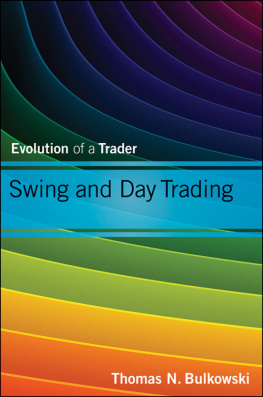
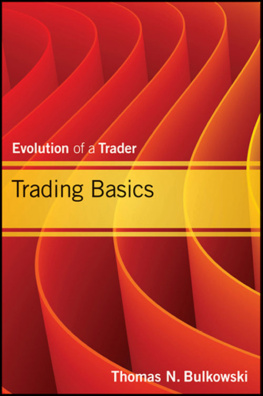
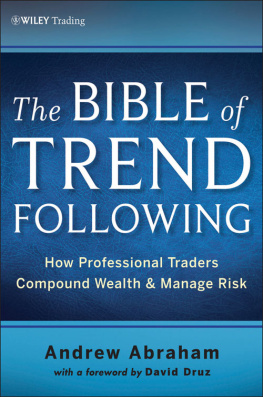

 Robert Robbins, CFA, started his financial career in 1994 in stock market research. From 1995 to 1999, he worked as a stock market strategist, using technical analysis to drive sector strategy, investment ideas, equity strategy, and macro research. In 1999, he started Robbins Capital, LLC, an investment adviser and fund manager, and he served as its portfolio manager. Since 2011, Robbins has been the sole principal, portfolio manager, and president of everTrend Global, LLC, a systematic macro investment fund. Robbins has been quoted in Barrons and the St. Petersburg Times and has provided his insights and knowledge into the stock market on several television newscasts.
Robert Robbins, CFA, started his financial career in 1994 in stock market research. From 1995 to 1999, he worked as a stock market strategist, using technical analysis to drive sector strategy, investment ideas, equity strategy, and macro research. In 1999, he started Robbins Capital, LLC, an investment adviser and fund manager, and he served as its portfolio manager. Since 2011, Robbins has been the sole principal, portfolio manager, and president of everTrend Global, LLC, a systematic macro investment fund. Robbins has been quoted in Barrons and the St. Petersburg Times and has provided his insights and knowledge into the stock market on several television newscasts.